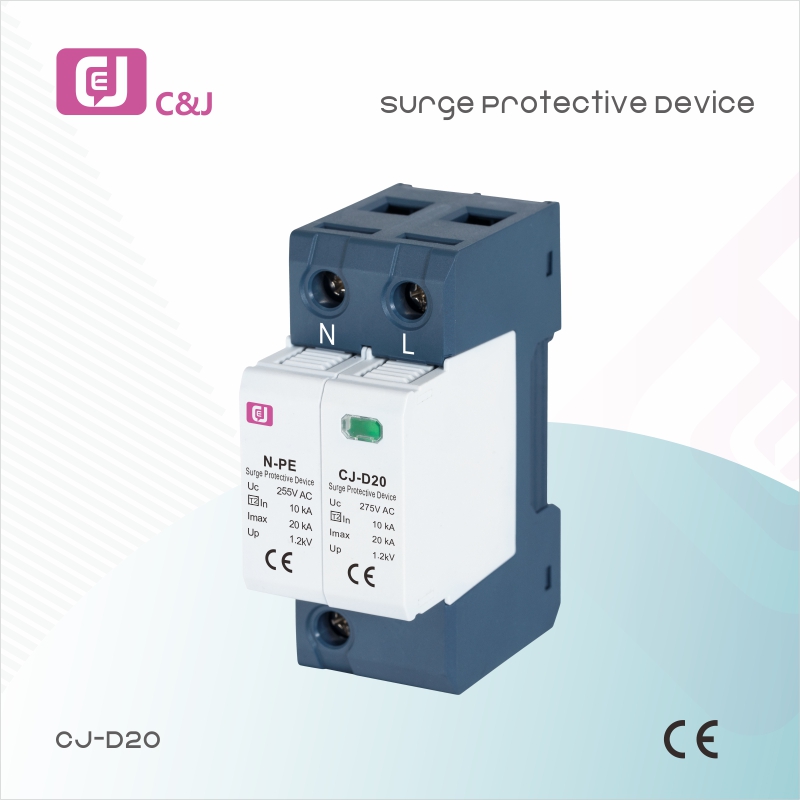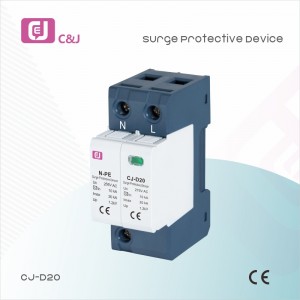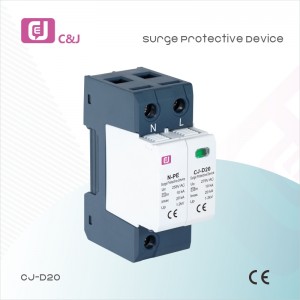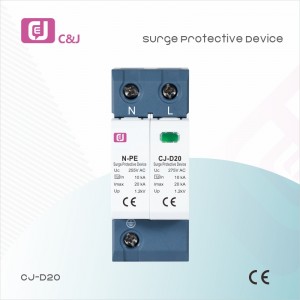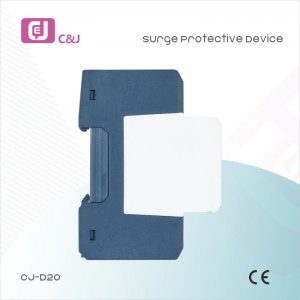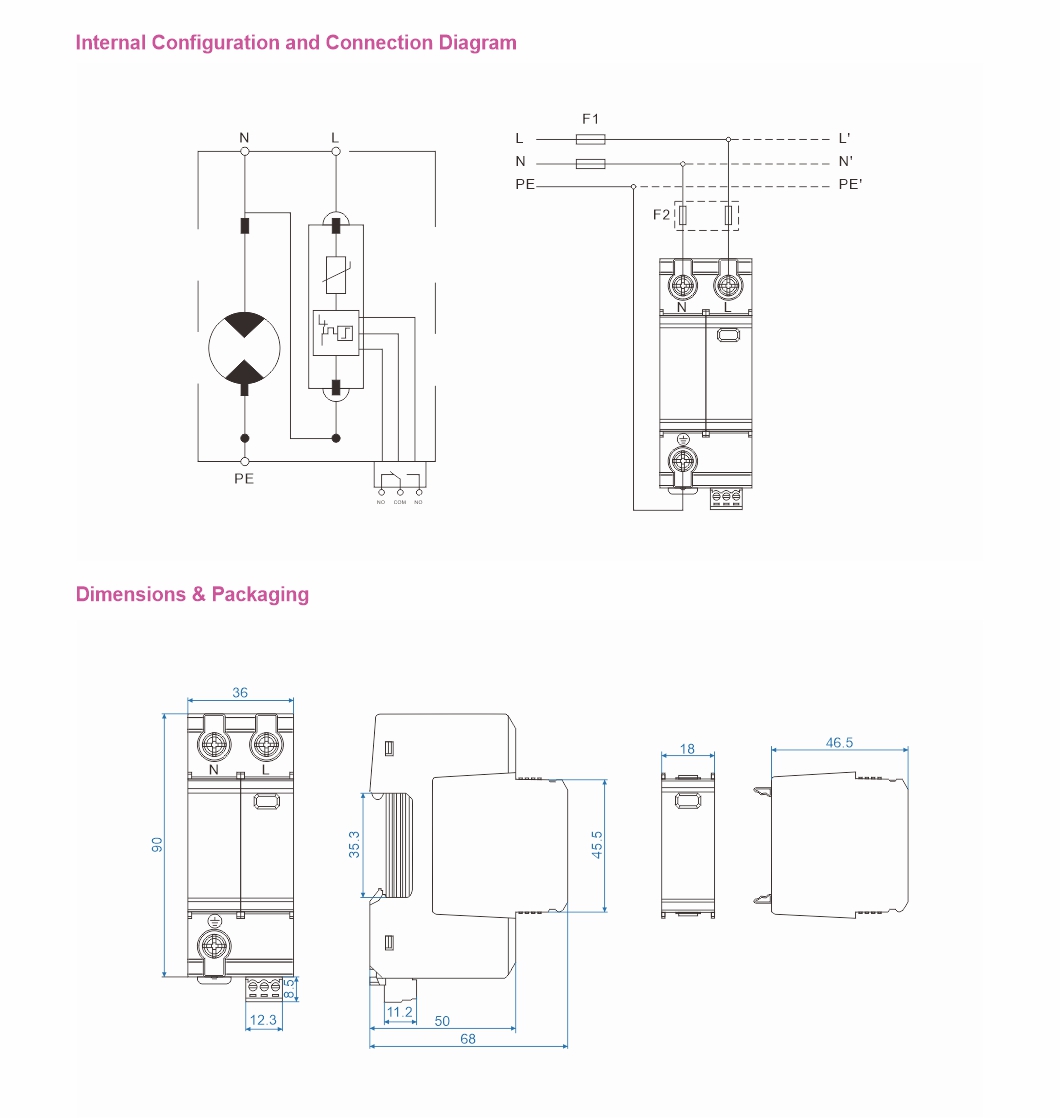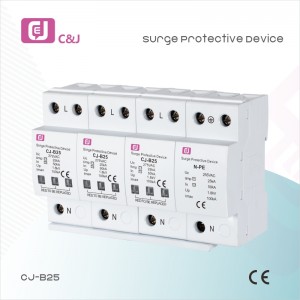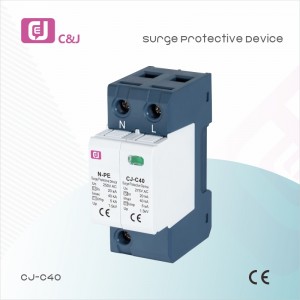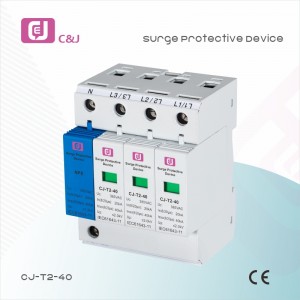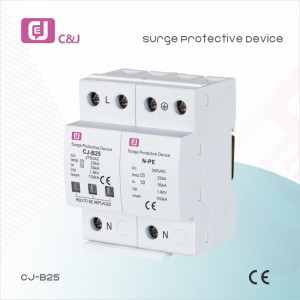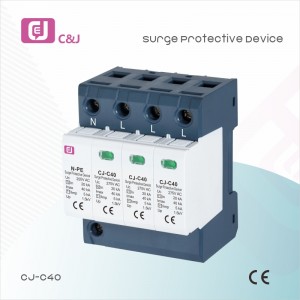CJ-D20 2p 1.2ka 20ka Power Lightning Surge Protector SPD Arrester
Technical Data
| IEC Electrical | 75 | 150 | 275 | 320 | 385 | 440 | ||
| Nominal AC Voltage (50/60Hz) | 60V | 120V | 230V | 230V | 230V | 400V | ||
| Maximum Continuous Operating Voltage (AC) | (L-N) | Uc | 75V | 150V | 275V | 320V | 385V | 440V |
| (N-PE) | Uc | 255V | ||||||
| Nominal Discharge Current (8/20μs) | (L-N)/(N-PE) | In | 10kV/10kA | |||||
| Maximum Discharge Current (8/20μs) | (L-N)/(N-PE) | Imax | 20kA/20kA | |||||
| Voltage Protection Level | (L-N)/(N-PE) | Up | 0.2kV/1.5kV | 0.6kV/1.5kV | 1.3kV/1.5kV | 1.5kV/1.5kV | 1.5kV/1.5kV | 1.8kV/1.5kV |
| Follow Current Interrupt Rating | (N-PE) | Ifi | 100ARMS | |||||
| Response Time | (L-N)/(N-PE) | tA | <25ns/<100ns | |||||
| Back-Up Fuse (max) | 125A gL /gG | |||||||
| Short-Circuit Current Rating (AC) | (L-N) | ISCCR | 10kA | |||||
| TOV Withstand 5s | (L-N) | UT | 90V | 180V | 335V | 335V | 335V | 580V |
| TOV 120min | (L-N) | UT | 115V | 230V | 440V | 440V | 440V | 765V |
| mode | Withstand | Withstand | Safe Fail | Safe Fail | Safe Fail | Safe Fail | ||
| TOV Withstand 200ms | (N-PE) | UT | 1200V | |||||
| Operating Temperature Range | -40ºF to +158ºF[-40ºC to +70ºC] | |||||||
| Permissible Operating Humidity | Ta | 5%…95% | ||||||
| Atmospheric pressure and altitude | RH | 80k Pa..106k Pa/-500m..2000m | ||||||
| Terminal Screw Torque | Mmax | 39.9 lbf-in[4.5 Nm] | ||||||
| Conductor Cross Section (max) | 2 AWG(Solid, Stranded) / 4 AWG (Flexible) | |||||||
| 35 mm²(Solid,Stranded) / 25 mm²(Flexible) | ||||||||
| Mounting | 35 mm DIN Rail,EN 60715 | |||||||
| Degree of Protection | IP 20 (built-in) | |||||||
| Housing Material | Thermoplastic: Extinguishing Degree UL 94 V-0 | |||||||
| Thermal Protection | Yes | |||||||
| Operating State / Fault Indication | Green ok / Red defect | |||||||
| Remote Contacts (RC) / RC Switching Capacity | Optional | |||||||
| RC Conductor Cross Section (max) | AC:250V/0.5A;DC:250V/0.1A;125V/0.2A;75V/0.5A | |||||||
| 16 AWG(Solid) / 1.5 mm2(Solid) | ||||||||
What is Surge Protective Device (SPD)?
The Surge Protective Device (SPD) is a component of the electrical installation protection system. This device connects in parallel to the power supply circuit of the loads that it has to protect. The surge protective device redirects electrical currents like nominal discharge current from a short circuit. It does that using either a solid-state contact or an air-gap switch. In addition, the surge protective device serves as a load-safe shutoff device for overcurrent conditions and a recloser that controls the voltage level above the rated voltage or low voltage in the event of a fault condition. We can also use the surge protective device at all levels of the power supply network. This approach is often the foremost commonly used and most effective sort of overvoltage protection.
Surge protective device connected in parallel features a high impedance. In other words, the sum of the series impedance is equal to the impedance of one surge protective device. Once the transient overvoltage appears within the system, the device’s impedance decreases, so surge current is driven through the surge protective device, bypassing the sensitive equipment. That is to protect equipment against overvoltage transients and disturbances, such as voltage spikes and electrical surges, frequency variations, and over-voltages caused by switching operations or lightning. When a user installs a surge strip or a surge protective device into a power line coming from a power utility that includes smoothing capacitors, surge suppressors are not necessary because these capacitors already protect from sudden changes in voltage level.


